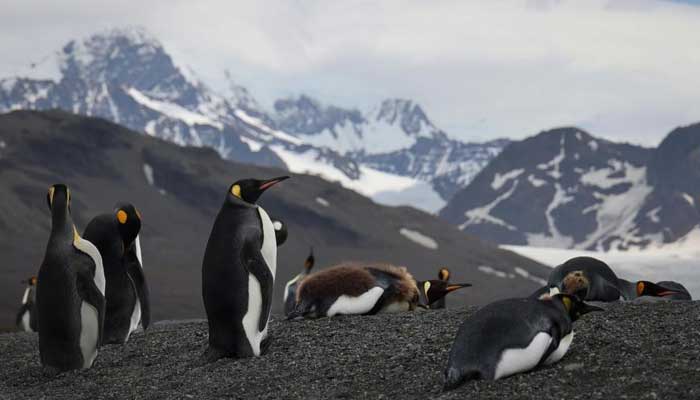
The world’s biggest iceberg is moving towards a remote island of Antarctica, which is home to millions of penguins and seals.
The "megaberg" could slam into South Georgia island and get stuck or be guided around it by currents.
If the iceberg, named A23a, gets stuck it could make it hard for penguin parents to feed their babies and some young could even starve.
British Antarctic Survey physical oceanographer Andrew Meijers shared on Thursday, that the process of an iceberg melting off and going around in natural due to climate change.
The glacier is moving at the speed of one meter every three to seven seconds, making its journey to South Georgia, where it will reach in the next two to four hours.
Ted Scambos, an ice scientist from University of Colorado wrote in an email, "Large icebergs bump into the shoals around South Georgia more or less every year — it’s a kind of highway for the major icebergs."
While referring to Sir Ernest Henry Shackleton, who led British expeditions to the southern continent, Scambos added, "This ocean current path has been known since Shackleton’s time, usually the icebergs take a bit longer," he added.
The iceberg, if hit the island, would put the population of penguins in danger, who are the main inhabitants of the area.
"South Georgia is an amazingly ecologically rich island. It’s a breeding ground for a huge number of penguins, millions of penguins and seals," Meijers said.
"There’s lots of pups and chicks and they’re all still dependent on their parents."
The parent animals cover a long path into the water and hunt for food, the iceberg could block their way, making adults penguins swim farther, utilising more energy or bringing less food for their babies.
Meanwhile, Scambos wrote that the overall population of the birds will not be affected, as he revealed, "The whole ecosystem in the Southern Ocean is very resilient to these events, It has evolved with these icebergs being a factor for hundreds of thousands of years."
Drifting of icebergs are normal, but they are happening more frequently as the climate warms and more fresh water flows into the ocean.















